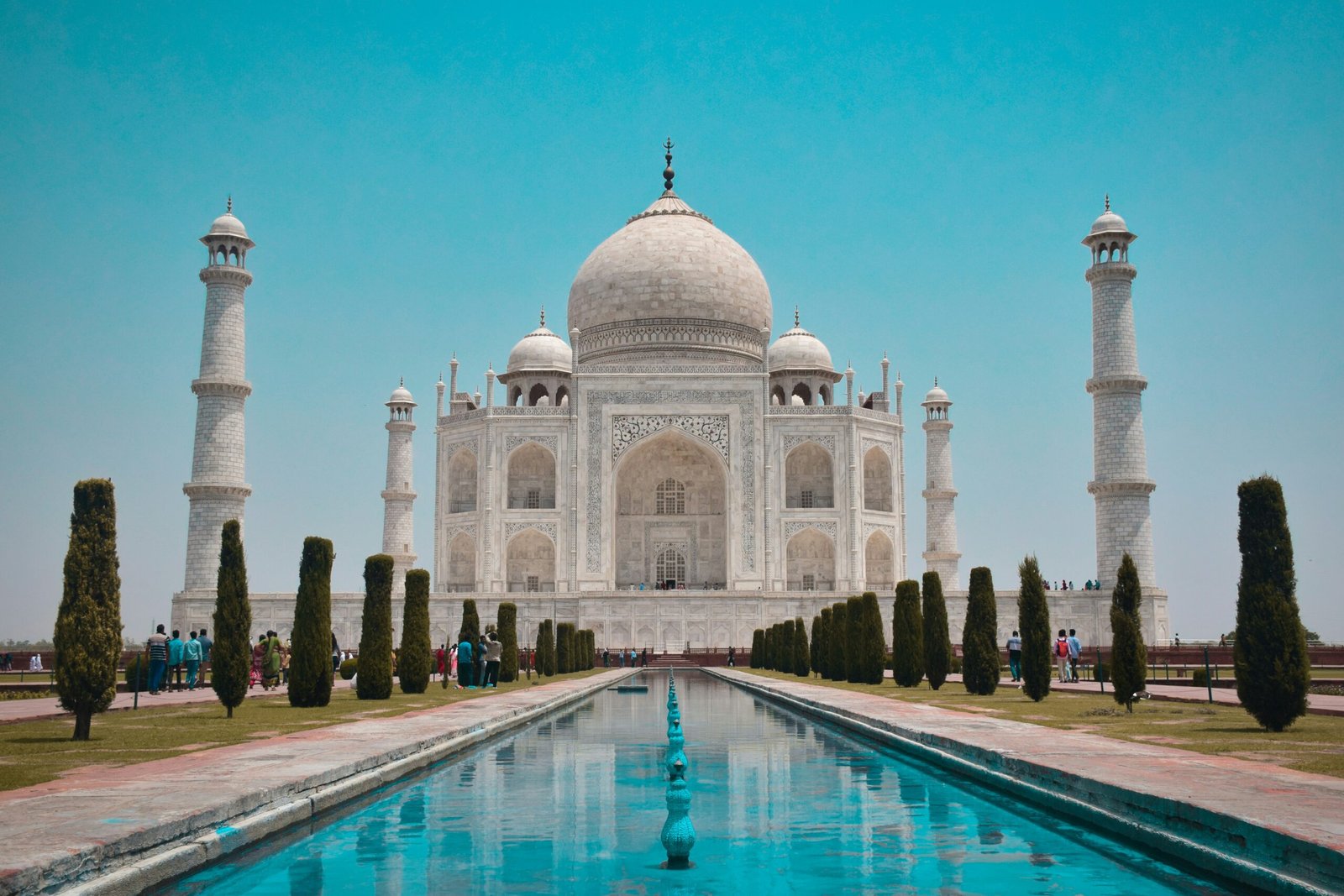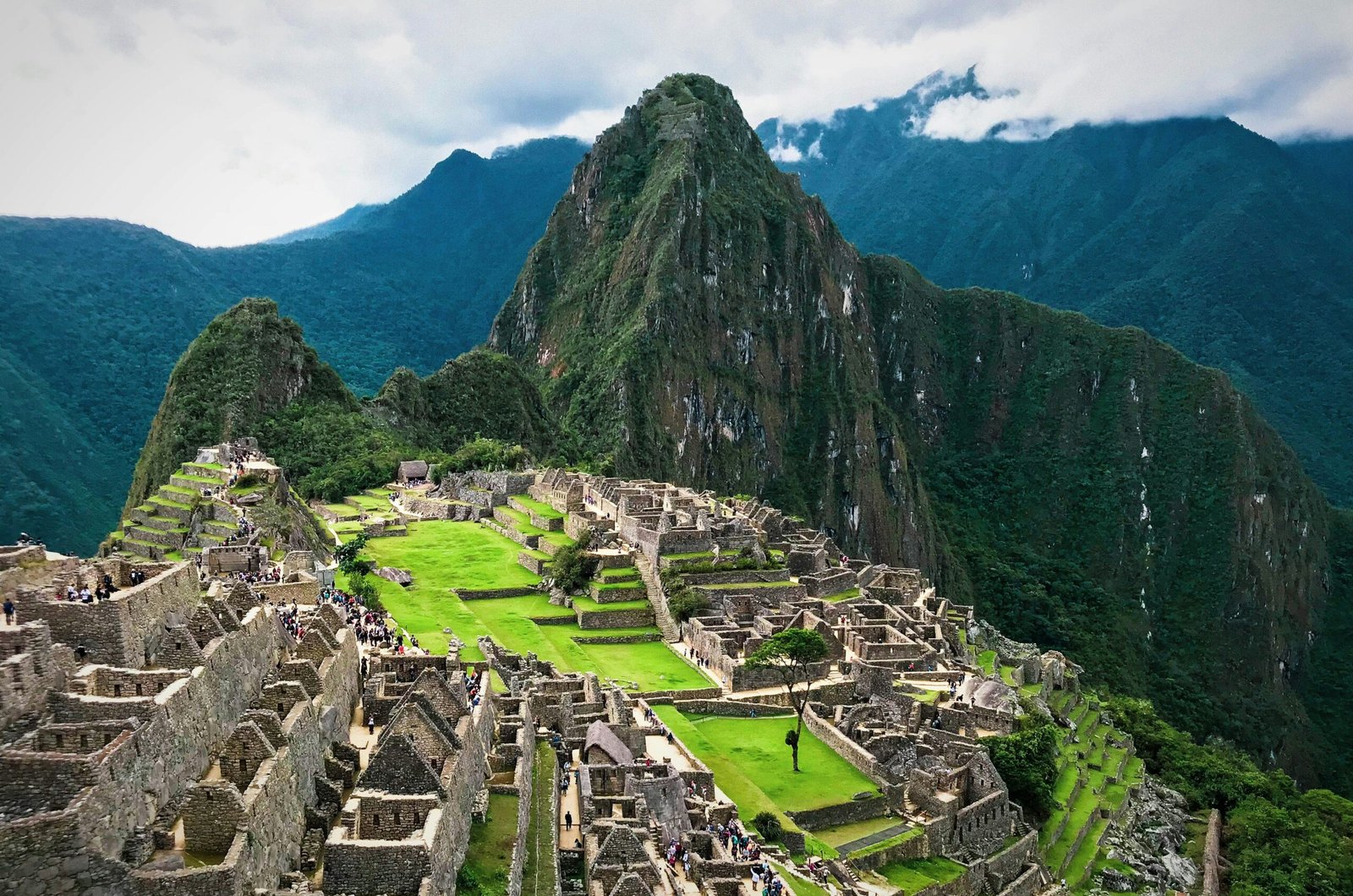
Photo by <a href="https://unsplash.com/@jovynchamb" rel="nofollow">Jovyn Chamb</a> on <a href="https://unsplash.com/?utm_source=hostinger&utm_medium=referral" rel="nofollow">Unsplash</a>
The Taj Mahal: A Timeless Wonder
The Taj Mahal, an enormous mausoleum of white marble, is a testament to the eternal love of Emperor Shah Jahan for his beloved wife. Built between 1631 and 1648 in Agra, India, this architectural masterpiece is considered the jewel of Muslim art and one of the seven wonders of the world.
A Symbol of Love and Devotion
The Taj Mahal stands as a symbol of love and devotion, a timeless tribute to the bond shared between Emperor Shah Jahan and Mumtaz Mahal. Mumtaz Mahal was Shah Jahan’s favorite wife and the inspiration behind this magnificent structure. The emperor was grief-stricken by her untimely death, and he vowed to create a monument that would capture the essence of their love.
The construction of the Taj Mahal was a labor of love, involving thousands of skilled artisans, architects, and craftsmen from across the Mughal Empire. The mausoleum was meticulously designed to reflect the beauty and grandeur of Islamic architecture, blending Persian, Indian, and Turkish influences seamlessly.
An Architectural Marvel
The Taj Mahal’s architectural marvels are evident in its intricate detailing, symmetrical layout, and perfect proportions. The main structure is made entirely of white marble, which gives it a radiant glow in the sunlight. The mausoleum is adorned with delicate carvings, calligraphy, and inlaid precious stones, showcasing the exceptional craftsmanship of the artisans.
The central dome, reaching a height of 73 meters (240 feet), is one of the most striking features of the Taj Mahal. It is surrounded by four smaller domes, creating a harmonious balance and adding to the overall grandeur of the monument. The minarets on each corner of the mausoleum not only serve as decorative elements but also provide a sense of scale and symmetry.
As visitors enter the Taj Mahal, they are greeted by a beautiful garden known as the Charbagh. The garden is divided into four quadrants by water channels, representing the four rivers of paradise mentioned in the Quran. The meticulously manicured lawns, fountains, and fragrant flowers create a serene and peaceful atmosphere, inviting visitors to explore the grounds.
A Cultural Icon
The Taj Mahal’s significance extends beyond its architectural beauty. It is a cultural icon that represents the rich history and heritage of India. Recognized as a UNESCO World Heritage Site, the Taj Mahal attracts millions of visitors from around the world each year, who come to marvel at its splendor and learn about its historical significance.
Visiting the Taj Mahal is a truly awe-inspiring experience. As you walk through the intricate archways and gaze upon the marble façade, you can’t help but be captivated by its beauty and the love story it embodies. Whether you are a history enthusiast, an architecture lover, or simply seeking a profound cultural experience, the Taj Mahal will leave an indelible mark on your soul.
A Timeless Wonder to Behold
The Taj Mahal stands as a testament to the power of love, beauty, and human ingenuity. Its timeless elegance and ethereal charm continue to inspire awe and admiration centuries after its construction. As you stand before this magnificent mausoleum, you can’t help but be humbled by the sheer magnitude of its beauty and the enduring legacy it represents.
Visiting the Taj Mahal is not just a journey through time; it is an opportunity to witness the extraordinary achievements of mankind. The Taj Mahal is more than a monument; it is a living testament to the power of love and the enduring spirit of human creativity.








